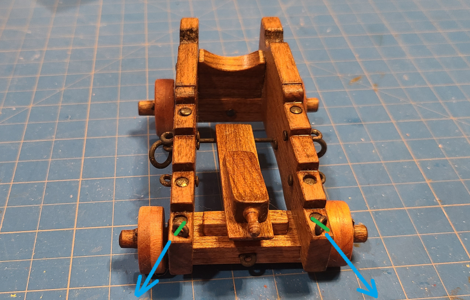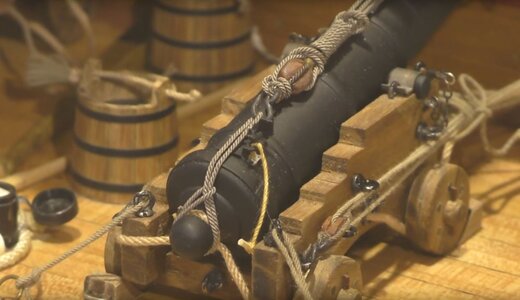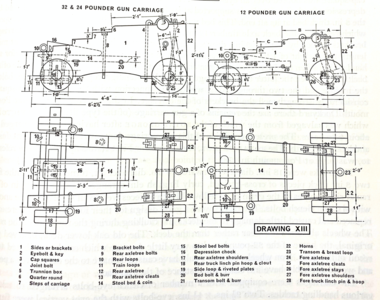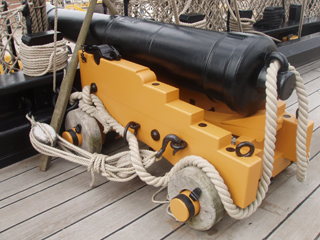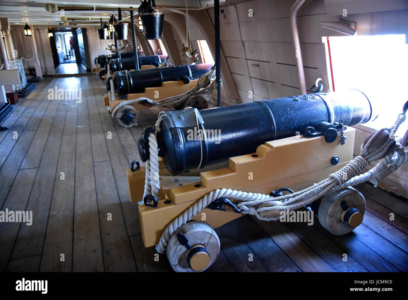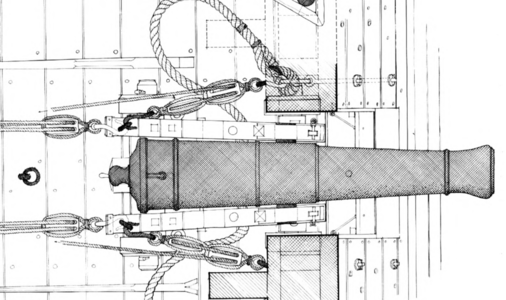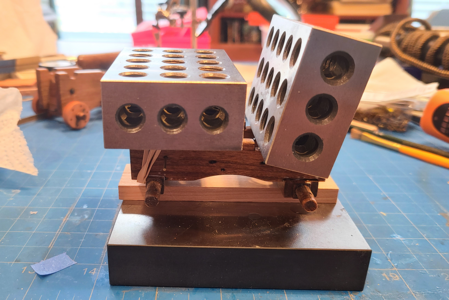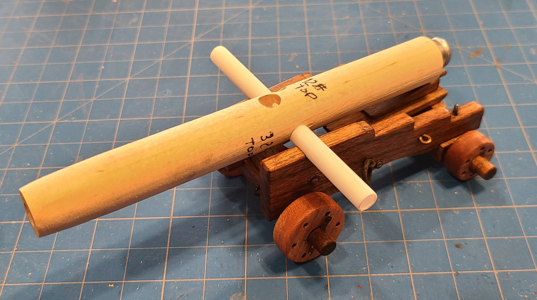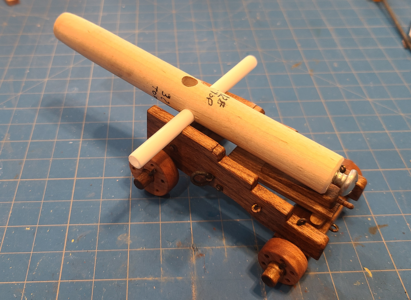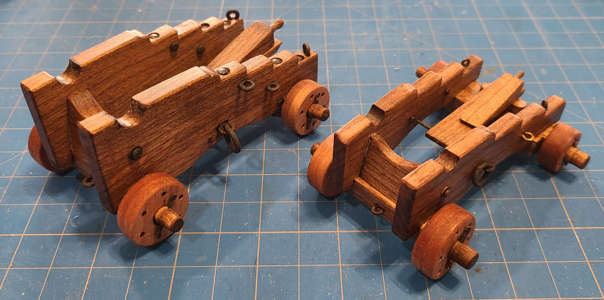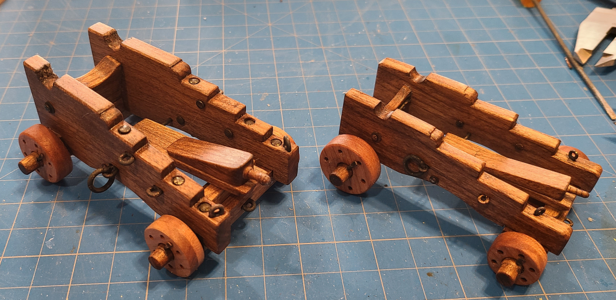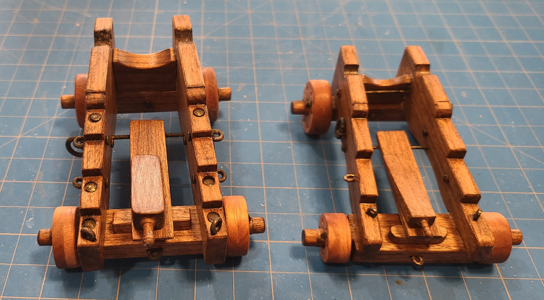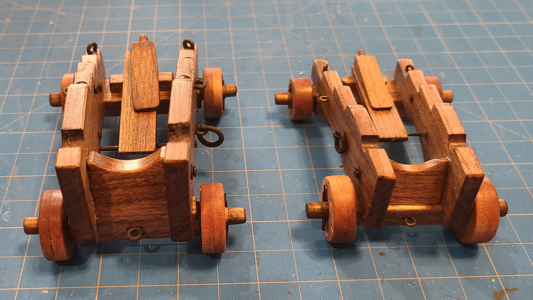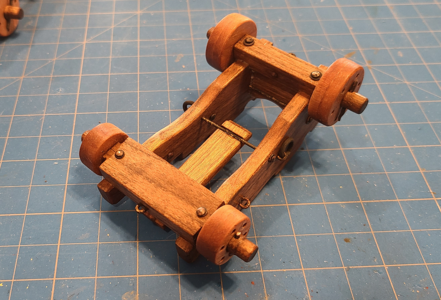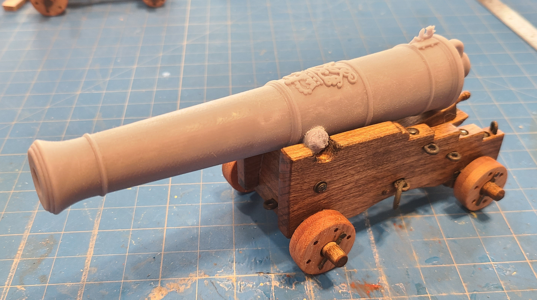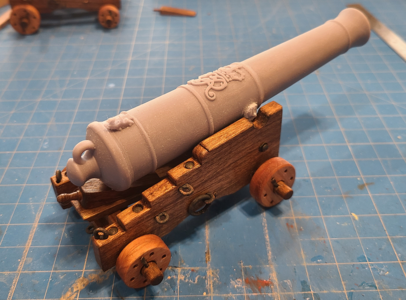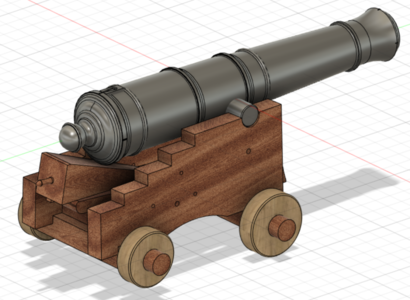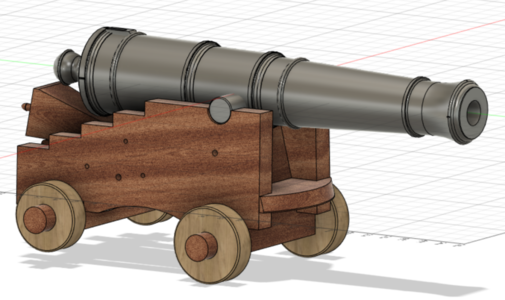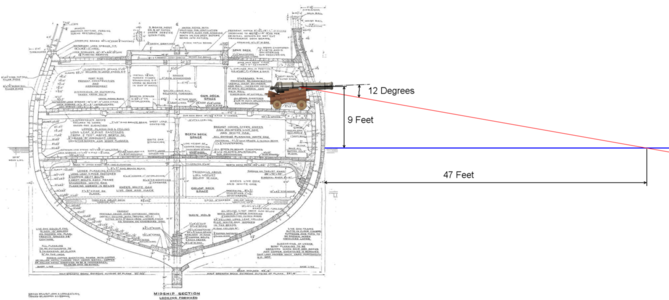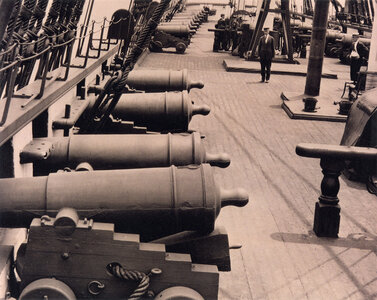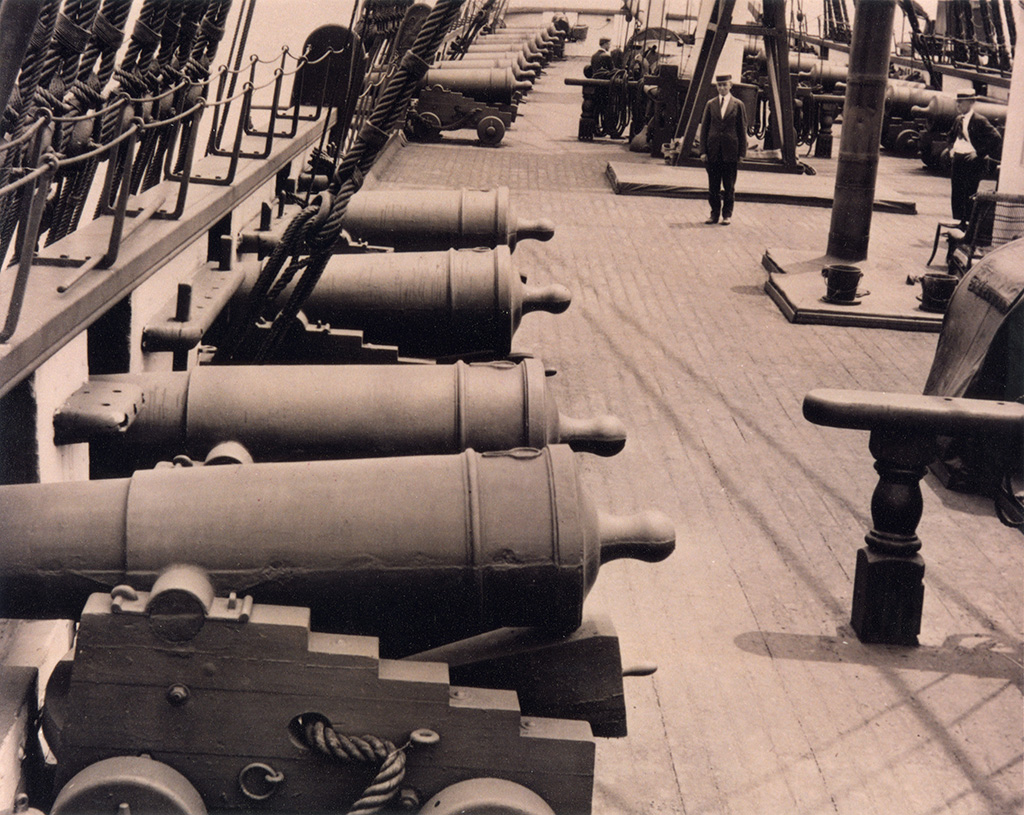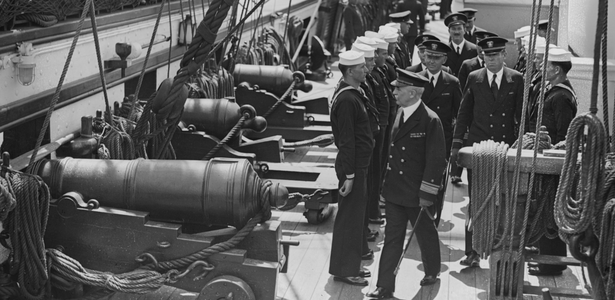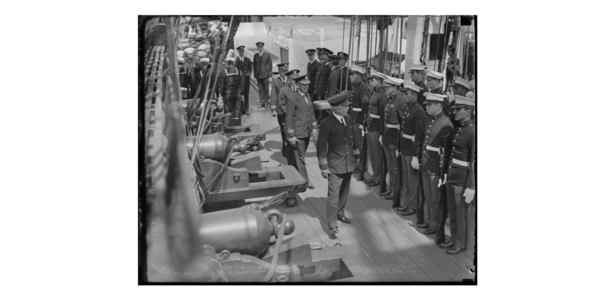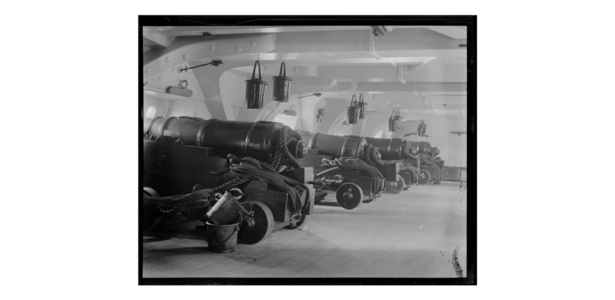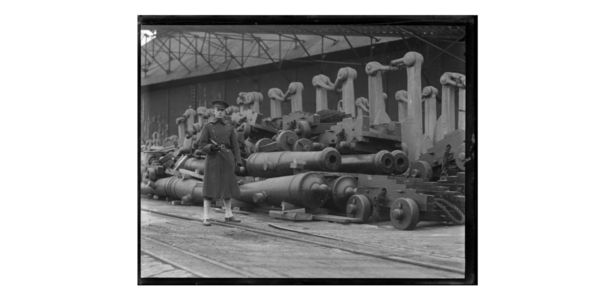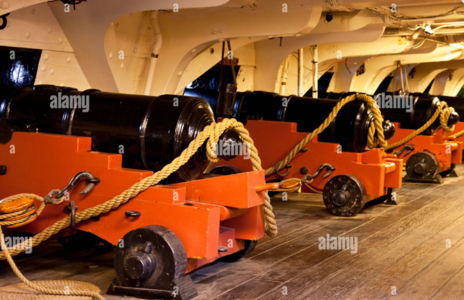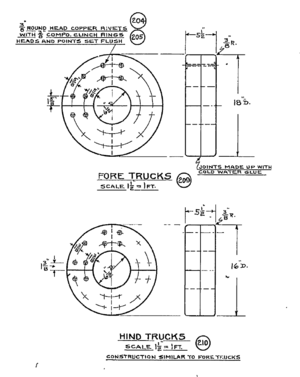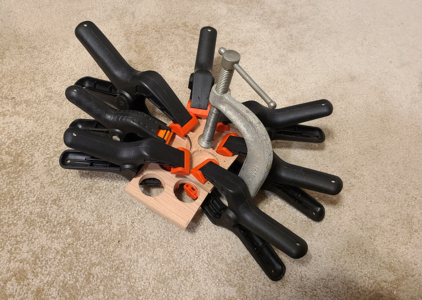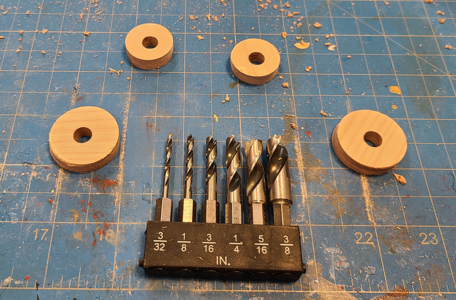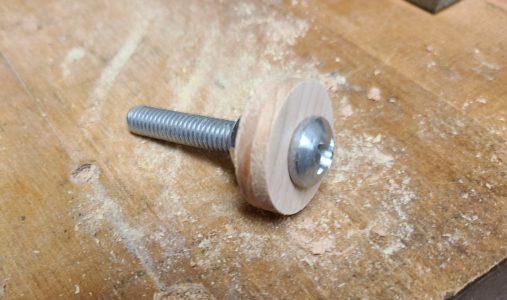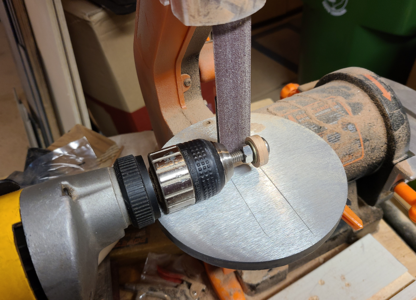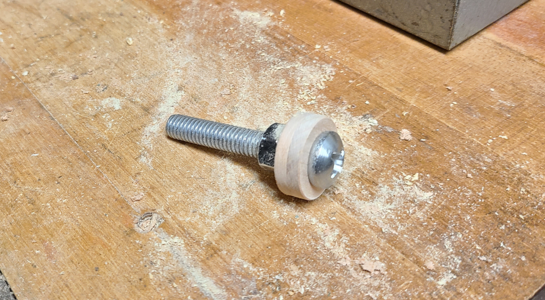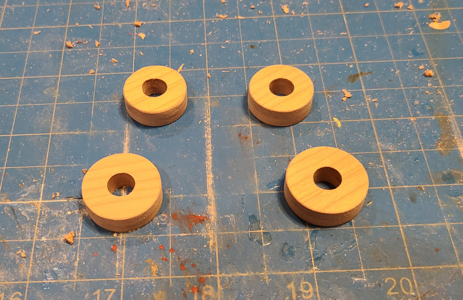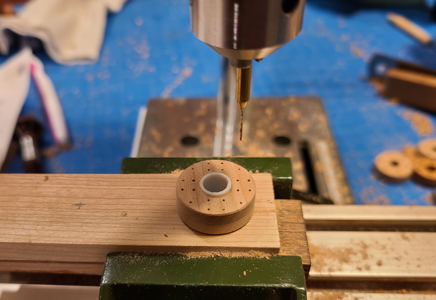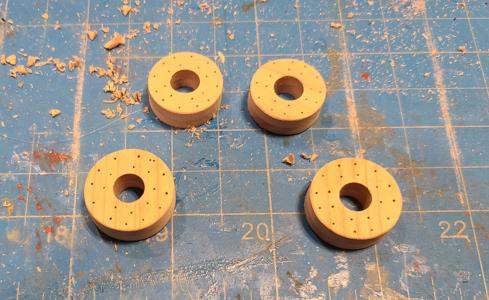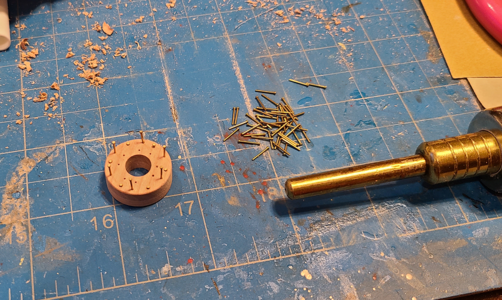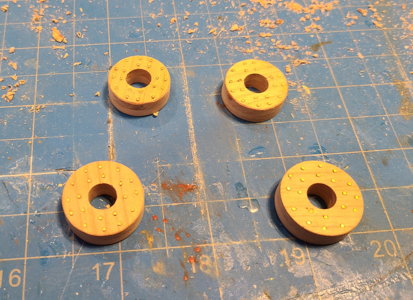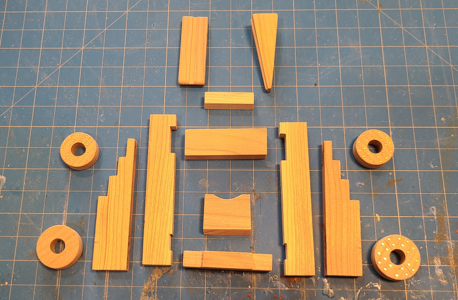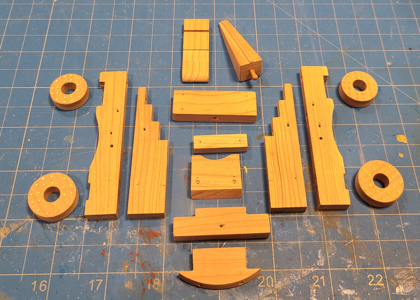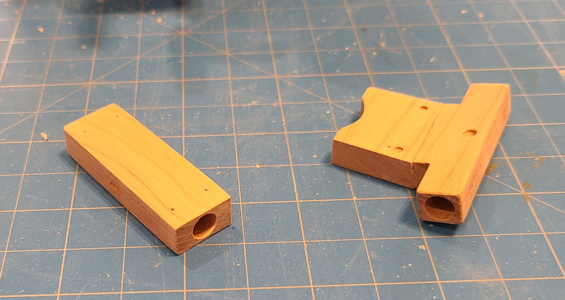While I made the separate parts of the carriage fairly accurately, I knew from experience, and trial, that the brackets and other pieces could be easily skewed one way or the other, making the barrel not centered on the carriage. Since I don't have the barrels (and don't yet know if or when I can have something made), I made a substitute:
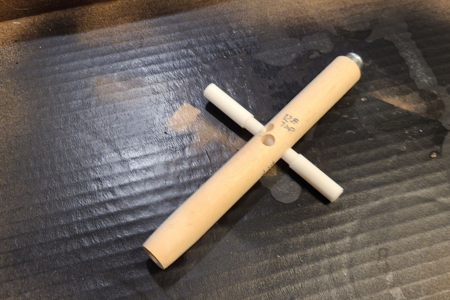
No, it doesn't look much like a cannon barrel. But it has a hole in the end, a screw "cascobel" to keep it rear-weighted and a removable trunnion of plastic tubing. One hole has been bored, at right angles to the cannon bore, for the 32-pound gun, and another for the 12-pound gun, each with approximately the same distance from the bottom of the barrel at the trunnion to the trunnion centerline. Thus, it will lay in place as the barrel will, and show any clearance problems with the bottom of the barrel and the transom. Oh, and the larger tubing that is removable over the smaller tubing represents the larger trunnion on the 32-pounder.
In an effort to glue the main four parts of the carriage (the two side brackets, the rear axletree and the front axletree/transom assembly) together squarely to the barrel, and spaced correctly, I used a number of rubber bands, shims on either side of the barrel and weights, atop a reference level piece of steel. You'll have to image what it looks like under this mess:
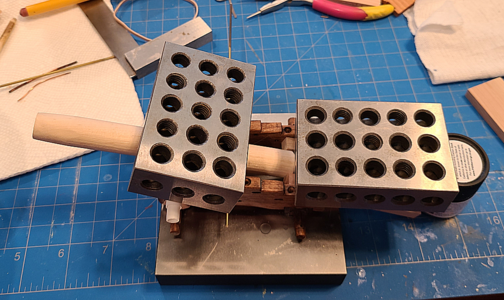
After gluing these main pieces together, it looked like this:
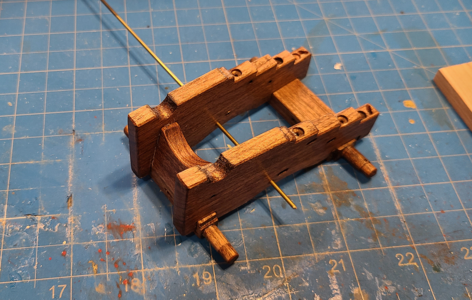
I had previously prepared the various rods, pins, loops, washers, etc. that connect and adorn the carriage. A mixture of copper, brass, coated brass (unfortunately), jewelry wire, brads and solder, I tired a new blackening agent: JAX Pewter Black. It states it works on pewter, lead, brass, bronze and copper (and on solder, which is mostly lead for my old stock). Despite an alcohol bath, vinegar etch, treatment and rinse, it did not cover all pieces well, and some at all. I went back to my staple product: Casey Brass Black, and it worked when JAX didn't. Overall, I wasn't very happy with the way the pieces were blackened: when buffed, it tends to come off, was blotchy in general, etc. But I'd put too much work into it to waste it, so I decided to assemble the carriage using the parts as-is. Areas that don't look good enough to me later (probably after I have a painted barrel, as I'm not sure what that will be yet), I may decide to touch-up with paint. In the meantime, I'm assuming that the sea air has simply had its way with these metal parts, resulting in a weathered appearance.
With the "cannon barrel" sitting in place and with the hardware added (I haven't received material for the capsquares and fore axletree stays yet, and they will be added, again, after I get the barrel) I have:
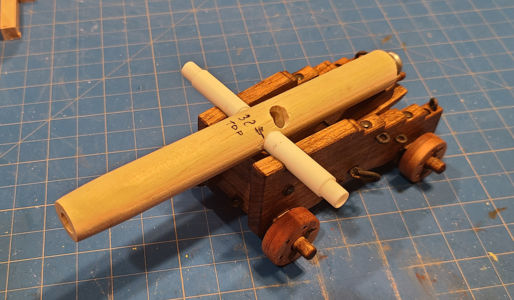
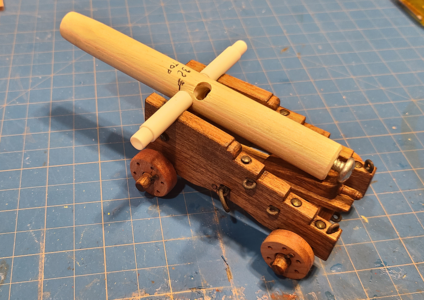
After removal of the "barrel" you can see the various hardware better:
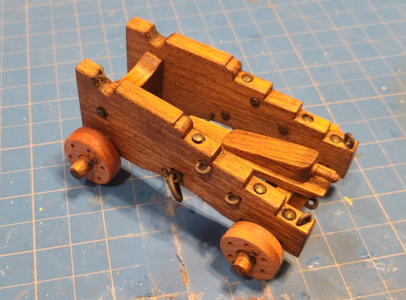
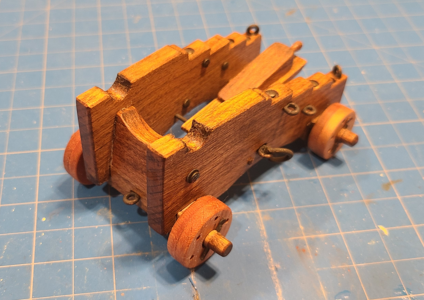
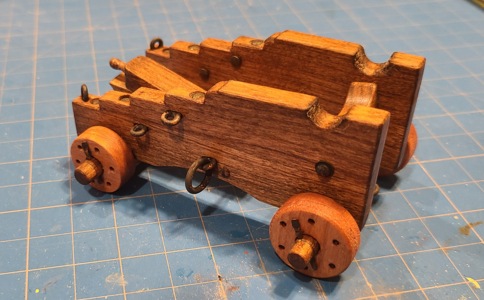
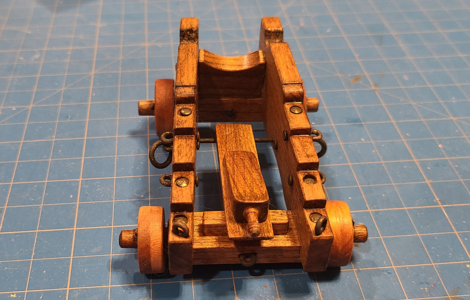
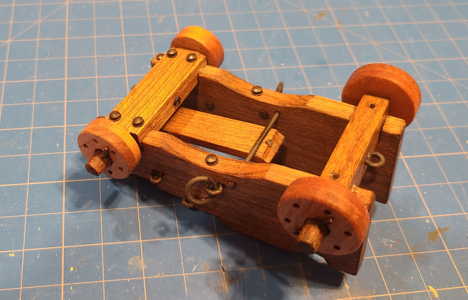
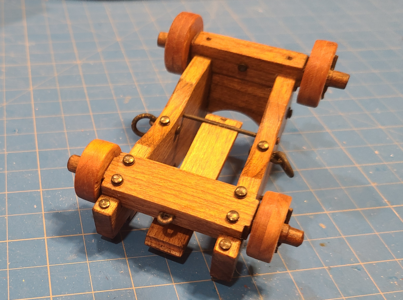
Of course the Depression Chock (Quoin) is loose at this point, and will be used to elevate the barrel to the proper angle after I have the barrel and capsquares.
Things have not all gone well, besides the blackening. One of the trucks (wheels) disappeared on me, in the trash I fear, and I had to use one of the not-so-round ones I'd made previously, and it doesn't quite match. I'll see how much that bothers me, and consider making a proper replacement.
That's it for now. I'll probably next do the same as above for the 12-pounder carriage. It's smaller, but also has lot less hardware associated with it, so should be easier. Huh - probably just cursed myself there. I'll have to keep a better eye on the remaining trucks.

No, it doesn't look much like a cannon barrel. But it has a hole in the end, a screw "cascobel" to keep it rear-weighted and a removable trunnion of plastic tubing. One hole has been bored, at right angles to the cannon bore, for the 32-pound gun, and another for the 12-pound gun, each with approximately the same distance from the bottom of the barrel at the trunnion to the trunnion centerline. Thus, it will lay in place as the barrel will, and show any clearance problems with the bottom of the barrel and the transom. Oh, and the larger tubing that is removable over the smaller tubing represents the larger trunnion on the 32-pounder.
In an effort to glue the main four parts of the carriage (the two side brackets, the rear axletree and the front axletree/transom assembly) together squarely to the barrel, and spaced correctly, I used a number of rubber bands, shims on either side of the barrel and weights, atop a reference level piece of steel. You'll have to image what it looks like under this mess:

After gluing these main pieces together, it looked like this:

I had previously prepared the various rods, pins, loops, washers, etc. that connect and adorn the carriage. A mixture of copper, brass, coated brass (unfortunately), jewelry wire, brads and solder, I tired a new blackening agent: JAX Pewter Black. It states it works on pewter, lead, brass, bronze and copper (and on solder, which is mostly lead for my old stock). Despite an alcohol bath, vinegar etch, treatment and rinse, it did not cover all pieces well, and some at all. I went back to my staple product: Casey Brass Black, and it worked when JAX didn't. Overall, I wasn't very happy with the way the pieces were blackened: when buffed, it tends to come off, was blotchy in general, etc. But I'd put too much work into it to waste it, so I decided to assemble the carriage using the parts as-is. Areas that don't look good enough to me later (probably after I have a painted barrel, as I'm not sure what that will be yet), I may decide to touch-up with paint. In the meantime, I'm assuming that the sea air has simply had its way with these metal parts, resulting in a weathered appearance.
With the "cannon barrel" sitting in place and with the hardware added (I haven't received material for the capsquares and fore axletree stays yet, and they will be added, again, after I get the barrel) I have:


After removal of the "barrel" you can see the various hardware better:






Of course the Depression Chock (Quoin) is loose at this point, and will be used to elevate the barrel to the proper angle after I have the barrel and capsquares.
Things have not all gone well, besides the blackening. One of the trucks (wheels) disappeared on me, in the trash I fear, and I had to use one of the not-so-round ones I'd made previously, and it doesn't quite match. I'll see how much that bothers me, and consider making a proper replacement.
That's it for now. I'll probably next do the same as above for the 12-pounder carriage. It's smaller, but also has lot less hardware associated with it, so should be easier. Huh - probably just cursed myself there. I'll have to keep a better eye on the remaining trucks.
Last edited:





